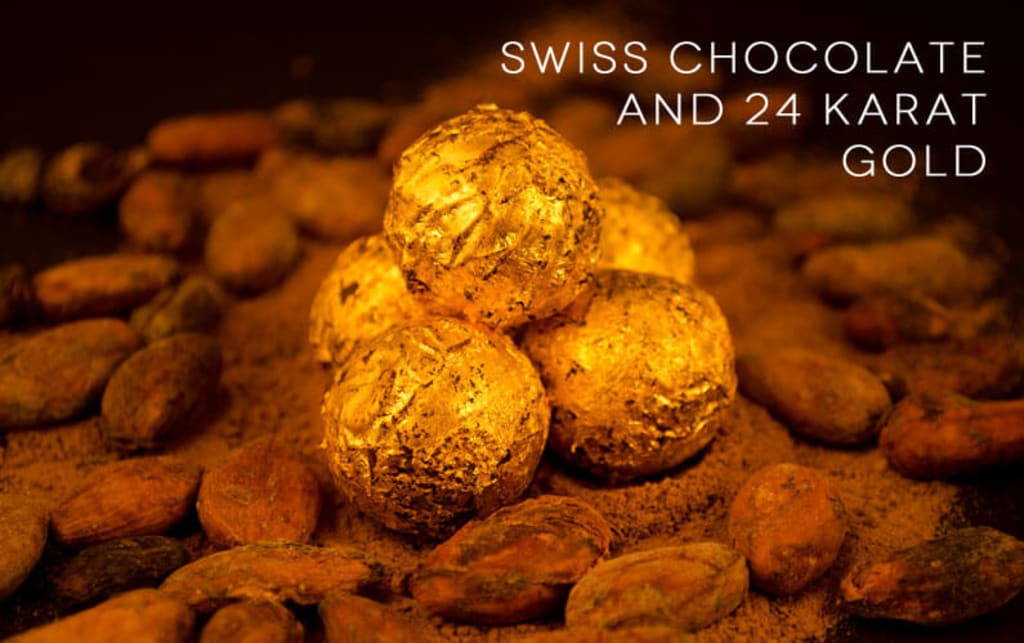Edible Gold: A Fascinating Culinary Delight
Edible gold, also known as culinary gold or food-grade gold, is a captivating ingredient that has been used in culinary arts for centuries. With its shimmering brilliance and luxurious appeal, edible gold adds a touch of opulence and elegance to a variety of dishes and beverages. This informational article delves into the world of edible gold, exploring its origins, applications, cultural significance, safety considerations, and the artistic touch it brings to culinary creations. If you want edible gold make sure it is legit.

Introduction
Edible gold, also known as culinary gold or food-grade gold, is a captivating ingredient that has been used in culinary arts for centuries. With its shimmering brilliance and luxurious appeal, edible gold adds a touch of opulence and elegance to a variety of dishes and beverages. This informational article delves into the world of edible gold, exploring its origins, applications, cultural significance, safety considerations, and the artistic touch it brings to culinary creations. If you want ot buy a legit edible gold just click.
The Origins and Historical Significance of Edible Gold
1.1 Ancient Origins:
Edible gold holds a storied past that dates back to ancient civilizations such as the Egyptians, Romans, and Aztecs. These cultures revered gold for its perceived mystical properties and believed it to possess extraordinary health benefits. Gold was used in rituals, ceremonies, and as a symbol of wealth and power.
1.2 Symbolism and Royal Associations:
Throughout history, edible gold has been associated with royalty and opulence. Kings, queens, and nobility indulged in gold-infused delicacies, showcasing their wealth and status. From gilded desserts to gold leaf-wrapped chocolates, edible gold adorned the tables of grand banquets and royal feasts.
1.3 Modern Resurgence:
In recent years, edible gold has experienced a resurgence in popularity, captivating the attention of contemporary chefs and adventurous food enthusiasts. Its incorporation into haute cuisine and molecular gastronomy has elevated the culinary experience, creating visually stunning and indulgent dishes.
Applications of Edible Gold in Culinary Creations
2.1 Visual Enhancement:
Edible gold finds its way into a wide range of culinary creations, adding a touch of elegance and luxury. It is delicately applied as a decorative element, enhancing the visual appeal of dishes and beverages. Whether as a delicate sprinkle, a carefully placed gold leaf, or a shimmering dusting, edible gold creates a captivating visual spectacle.
2.2 Culinary Artistry:
Edible gold serves as a canvas for culinary artists, allowing them to showcase their creativity and imagination. Chefs skillfully incorporate edible gold into desserts, cakes, pastries, and cocktails, transforming these creations into edible works of art. The delicate gold flakes or sheets add depth, texture, and a mesmerizing golden hue to culinary masterpieces.
2.3 Indulgent Confections and Mixology:
Chocolatiers and pastry chefs have embraced the art of incorporating edible gold into their confections. From gold leaf-covered bonbons to gold-dusted macarons, these edible delights captivate both the eyes and the taste buds, offering a truly luxurious sweet experience. Similarly, mixologists have introduced edible gold into the world of beverages, adorning cocktails and drinks with shimmering golden accents.
2.4 Exquisite Garnishes and Savory Delights:
Edible gold has also found its place in savory dishes, providing a touch of sophistication and luxury. Chefs artfully garnish dishes with edible gold to create visually striking presentations, elevating the dining experience to new heights. From gilded seafood and sushi to gold-infused sauces, edible gold adds a touch of opulence to a wide range of savory delights.
The Safety and Consumption of Edible Gold
3.1 Safety Precautions and Regulations:
To ensure safety, it is crucial to use edible gold specifically labeled as "edible" or "food-grade." Regulatory authorities such as the United States Food and Drug Administration (FDA) and the European Food Safety Authority (EFSA) have approved edible gold for consumption. These governing bodies regulate the purity and safety standards of edible gold products.
3.2 Minimal Consumption and Texture:
Edible gold is typically consumed in small quantities due to its thinness. The gold used in culinary applications is so thin that it dissolves or crumbles upon contact with moisture, making it easy to consume without any noticeable texture or taste. It imparts a subtle metallic taste that enhances the overall sensory experience without overpowering the flavors of the dish.
3.3 Allergies and Precautions:
While edible gold is generally safe for consumption, individuals with known allergies to gold or other metals should exercise caution. It is advisable to consult with a healthcare professional if there are concerns about potential allergies or adverse reactions to edible gold.
The Symbolism and Cost of Edible Gold
4.1 Symbol of Opulence and Celebration:
Edible gold is synonymous with opulence, luxury, and exclusivity. Its presence on the menu signals a dining experience beyond the ordinary, reserved for special occasions and those seeking the finest things in life. Incorporating edible gold into culinary creations adds a touch of extravagance and allows diners to revel in the lap of luxury.
4.2 Cost Considerations:
Edible gold is a luxury ingredient, and its cost is significantly higher compared to other food items. The price of edible gold can vary depending on factors such as purity, quantity, and brand. Its exclusivity and the meticulous process involved in creating edible gold contribute to its higher price point.
Conclusion
Edible gold continues to captivate the culinary world with its shimmering allure and refined elegance. From ancient civilizations to modern-day gastronomy, it has been treasured for its visual enhancement, cultural significance, and the extraordinary experiences it brings to the realm of fine dining. Whether adorning desserts, chocolates, or savory dishes, edible gold adds a touch of opulence, transforming ordinary culinary creations into extraordinary masterpieces. As a luxury ingredient, its significance extends beyond taste, inviting diners to immerse themselves in a world of indulgence and unforgettable experiences. Embracing the rich history, culinary artistry, safety considerations, and symbolism of edible gold allows us to appreciate its role in creating truly extraordinary culinary delights.





Comments
There are no comments for this story
Be the first to respond and start the conversation.